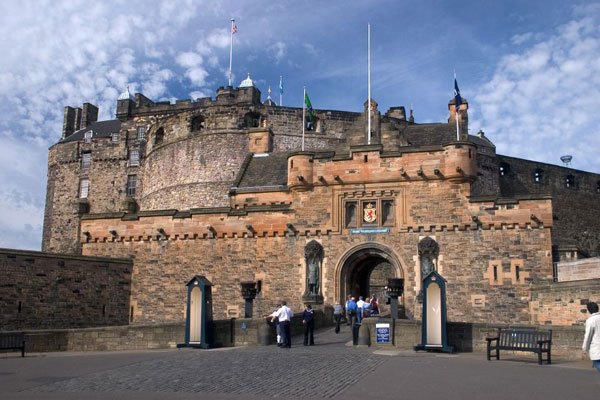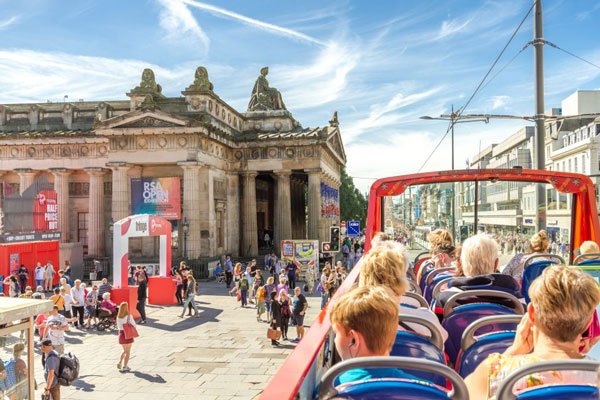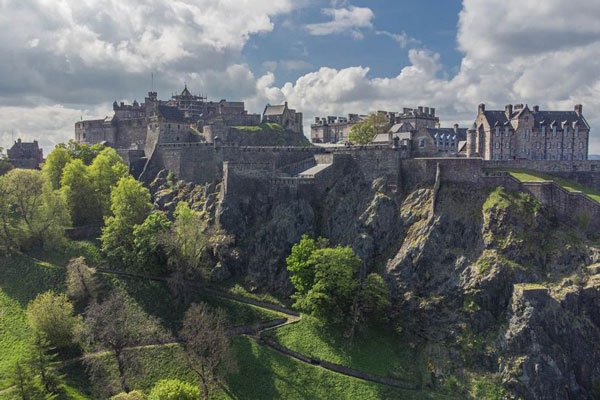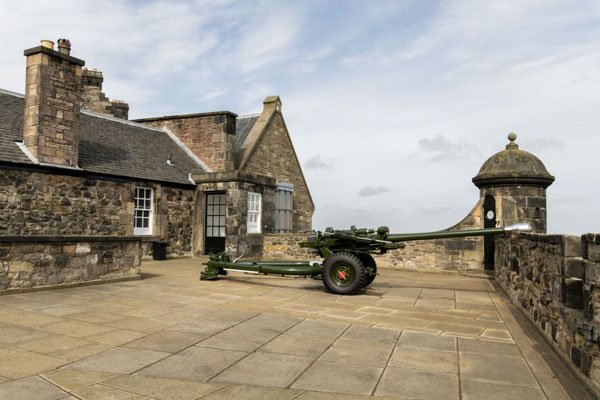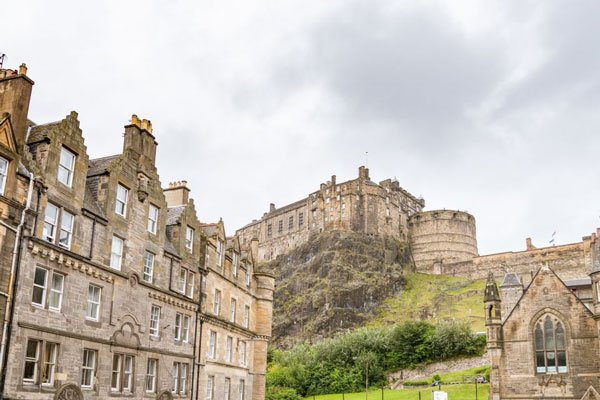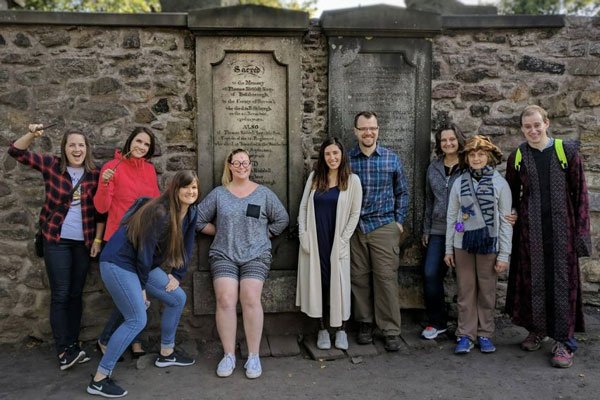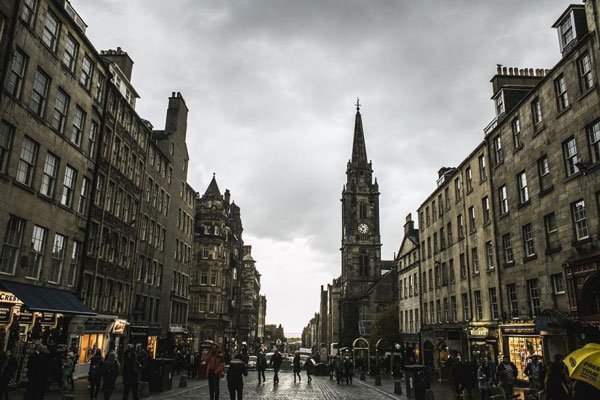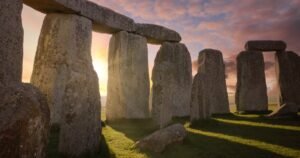Fascinating Edinburgh Castle Facts
Fascinating Edinburgh Castle Facts
Discover fascinating Edinburgh Castle facts and unveil captivating insights. This page delves into two distinct sections, offering both quick-glance Edinburgh Castle facts and captivating trivia, enriching your understanding of this Scottish symbol.
Edinburgh Castle Quick Facts

- Address: Edinburgh Castle, Castle Hill, Edinburgh EH1 2NP
- Original Scottish Name: Dùn Èideann Caisteal
- Total Area: 3.5 hectares (8.6 acres)
- Construction Started and Finished: Construction began in the 12th century and continued intermittently over the centuries. The castle was largely complete by the 16th century.
- Architects: Numerous architects have contributed to the castle’s design and construction over the centuries, including John Stewart of Baldynneis, Robert Mylne, and William Wallace.
- Architectural Style: A blend of styles, including Romanesque, Gothic, and Renaissance.
- Renowned for its: Historical significance, its commanding position overlooking the city of Edinburgh, and its role as a symbol of Scottish national identity.
- UNESCO World Heritage Site since: 1996
- Special Events: A variety of special events throughout the year, including the Royal Edinburgh Military Tattoo, the Hogmanay celebrations, and the Edinburgh Festival Fringe.
- Number of Visitors per Year: 2.2 million
Edinburgh Castle Fun Facts
Explore intriguing details about Edinburgh Castle as we unveil captivating insights:
Besieged 26 Times But Never Fallen
Edinburgh Castle has a remarkable history of resilience, having successfully defended itself against 26 sieges throughout its existence. This unwavering resistance has earned it the reputation of being “impregnable” and a symbol of Scottish fortitude.
The castle’s strategic location atop Castle Rock, a volcanic crag overlooking the city of Edinburgh, has contributed significantly to its ability to withstand attacks. The natural defenses provided by the rock, coupled with the castle’s formidable fortifications, have made it a formidable challenge for any invading force.
Most Ancient Standing Structure In Edinburgh
St. Margaret’s Chapel is a remarkable architectural gem, holding the distinction of being the oldest surviving building in Edinburgh. Dating back to the 12th century, the chapel stands as a testament to the city’s rich history and the enduring legacy of Norman architecture in Scotland.
Constructed in honor of Queen Margaret, wife of King Malcolm III, St. Margaret’s Chapel embodies the distinctive features of Norman architecture. Its simple yet elegant design, characterized by rounded arches, thick walls, and narrow windows, reflects the architectural style prevalent during the 11th and 12th centuries.
Vast And Imposing Hall Of Medieval Grandeur
The Great Hall, a magnificent structure within Edinburgh Castle, stands as a testament to the grandeur and architectural prowess of the 14th century. Completed in 1511 under the reign of King James IV, the hall served as the principal royal ceremonial space within the castle.
Its imposing dimensions, soaring wooden roof, and intricate architectural details have captivated visitors for centuries. With its impressive length of 190 feet (58 meters) and width of 47 feet (14 meters), the Great Hall could accommodate up to 300 guests, making it one of the largest medieval halls in Scotland.
Legendary Ancient Symbol
The Stone of Destiny, also known as the Stone of Scone, is a sandstone block that holds immense historical and cultural significance for Scotland. It is believed to have been used as the coronation stone for Scottish monarchs since the 9th century, and its presence within Edinburgh Castle adds to the castle’s allure and mystique.
The stone’s origins are shrouded in legend, with some accounts tracing its history back to the time of the biblical patriarch Jacob. However, the earliest verifiable evidence suggests that it was brought to Scotland from Ireland in the 5th century. From that time forward, the stone became an integral part of Scottish royal tradition, serving as a symbolic seat of power and a unifying force for the nation.
Harrowing Historical Event
Edinburgh Castle is the site of a dark and tragic chapter in Scottish history known as the “Black Dinner” of 1440, an event that eerily mirrors the infamous “Red Wedding” from George R.R. Martin’s “A Song of Ice and Fire” series, later adapted into the popular television show “Game of Thrones.” In 1440, the Earl of Douglas, William, and his brother, David, were invited to a seemingly friendly dinner at Edinburgh Castle by King James II. Despite the guise of hospitality, the king had sinister intentions to eliminate his rivals.
The brothers were lured into the Great Hall for a feast but were soon seized by the king’s guards. Accused of treason, they faced a mock trial, found guilty, and were beheaded, their bodies left on the castle grounds. The Black Dinner serves as a chilling reminder of medieval Scotland’s power struggles and political intrigue, a stark warning against challenging the monarchy’s authority.
Haunted Stronghold
Edinburgh Castle has long been associated with tales of ghosts, hauntings, and paranormal phenomenon. Over the centuries, numerous reports of ghostly sightings, unexplained occurrences, and eerie sensations have emerged from within the castle’s walls, adding to its mystique and allure. Mysterious sounds, footsteps, voices, and battle noises, create an atmosphere of spectral echoes. Some feel temperature drops or unease in specific areas, hinting at unseen presences.
The castle boasts spectral residents, such as the “Grey Lady,” believed to be Agnes Douglas, meeting a tragic end in the dungeons during the 15th century. Wearing a grey gown, she’s seen sorrowfully wandering corridors. The headless drummer boy, a spirit from the 16th-century siege, haunts the castle, marching through the ramparts, beating his drum; a chilling reminder of its turbulent history.
Book Edinburgh Castle Tickets & Tours
Explore below your Edinburgh Castle ticket options and pick from the finest selection:
Bestselling Edinburgh Castle Guided Tour
Best Combo Ticket for Edinburgh Castle
Top-Value City Pass for Edinburgh’s Royal Highlights
Best Edinburgh Castle Experience for Harry Potter Fans
>> For more options, go to our ticket page and pick from the finest selection.
>> Dive into the fascinating history of Edinburgh Castle here.
>> Check out the best places to eat near the Edinburgh Castle with our restaurant recommendations.
>> Find out how to get to the Edinburgh Castle and useful traveler tips on our dedicated page.

